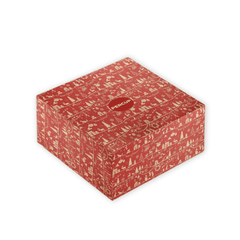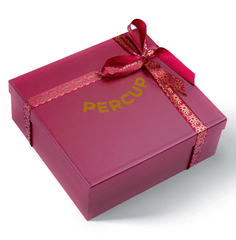A Complete Coffee Guide
Coffee isn’t just a beverage—it’s a ritual. From the intense kick of an espresso to the soothing creaminess of a latte, every coffee type has its own personality. But how much water or milk do you need to get it just right? In this detailed guide, we’ll cover the exact amounts for popular coffee drinks, plus extra tips to elevate your brewing game. Let’s get started!
Why Water and Milk Matter in Coffee Making
Water extracts the coffee’s flavor, while milk adds depth and texture. Too much or too little of either can throw off the balance, leaving you with a brew that’s too bitter, weak, or watery. Below, we’ll break down the ideal water and milk measurements for each coffee type, based on standard serving sizes, along with insider tricks to perfect your cup.
1. Espresso: The Strong Foundation

- Water: 25-30 ml (1 oz) per single shot; 50-60 ml (2 oz) for a double shot.
- Milk: None (unless part of a milk-based drink).
- How It’s Made: Hot water is forced through finely-ground coffee under 9 bars of pressure for 25-30 seconds.
- Flavor Profile: Bold, concentrated, with a rich crema (the frothy top layer).
- Pro Tip: Use a 1:2 coffee-to-water ratio (e.g., 18g coffee for 36 ml water). Freshly roasted beans and a precise grind size (fine, like table salt) are crucial for that signature intensity. Try Espresso
- Variation: Try a ristretto (15-20 ml water) for an even stronger, shorter shot.
2. Americano: Espresso Meets Water

- Water: 25-30 ml espresso + 90-120 ml (3-4 oz) hot water.
- Milk: None, typically served black.
- How It’s Made: Dilute a shot of espresso with hot water for a smoother, less intense flavor.
- Flavor Profile: Light and clean, with espresso’s depth but less punch.
- Pro Tip: Pour espresso over hot water (not vice versa) to preserve the crema. Adjust water for a custom strength—more for a milder taste, less for a bolder brew. Try americano.
- Variation: Add a splash of cold water for an iced Americano on hot days
3. Cappuccino: A Frothy Classic

- Water: 25-30 ml (1 oz) for a single espresso shot.
- Milk: 60-90 ml (2-3 oz) steamed milk + equal foam on top.
- How It’s Made: Combine espresso, steamed milk, and a thick foam layer in equal parts (often 5-6 oz total).
- Flavor Profile: Balanced, with a strong coffee base and a creamy, airy finish.
- Pro Tip: Heat milk to 60-70°C (140-160°F) and stretch it with a steam wand for that velvety foam. Dust with cocoa or cinnamon for a classic touch. Try cappuccino.
- Variation: A dry cappuccino uses more foam and less steamed milk for a lighter feel.
4. Latte: Creamy and Smooth
- Water: 25-30 ml (1 oz) single shot or 50-60 ml (2 oz) double shot.
- Milk: 180-240 ml (6-8 oz) steamed milk + a thin foam layer.
- How It’s Made: Espresso topped with a generous amount of steamed milk, served in 8-12 oz cups.
- Flavor Profile: Mild and milky, with subtle coffee notes shining through.
- Pro Tip: Use a double shot for a stronger coffee kick. Pour milk slowly to create latte art—think hearts or rosettas. Try latte.
- Variation: Swap dairy for oat or almond milk for a plant-based twist.
5. Flat White: Small but Bold

- Water: 50-60 ml (2 oz) for a double espresso shot.
- Milk: 120-150 ml (4-5 oz) steamed milk with microfoam.
- How It’s Made: A double shot of espresso with velvety steamed milk, typically 6-8 oz total.
- Flavor Profile: Rich and robust, with a silky texture that highlights the espresso.
- Pro Tip: Focus on microfoam (tiny bubbles) rather than thick foam for that smooth mouthfeel. Use a smaller cup to keep it concentrated. Try flat white.
- Variation: Originating from Australia/New Zealand, some baristas tweak the ratio for a stronger coffee-to-milk balance.
6. Mocha: Chocolate Meets Coffee

- Water: 25-30 ml (1 oz) single shot or 50-60 ml (2 oz) double shot.
- Milk: 180-240 ml (6-8 oz) steamed milk + chocolate syrup or powder.
- How It’s Made: A latte with a chocolate twist, served in 8-12 oz cups, often topped with whipped cream.
- Flavor Profile: Sweet and indulgent, blending coffee’s bitterness with chocolate’s richness.
- Pro Tip: Use 1-2 tablespoons of chocolate syrup, adjusting to taste. Dark chocolate adds depth, while milk chocolate keeps it sweeter. Try mocca.
- Variation: Add a sprinkle of sea salt for a salted mocha twist.
7. Drip Coffee: The Everyday Brew

- Water: 240 ml (8 oz) per cup.
- Milk: Optional, 15-30 ml (0.5-1 oz) if added.
- How It’s Made: Hot water filters through medium-ground coffee (1:16 ratio, e.g., 15g coffee to 240 ml water).
- Flavor Profile: Simple and straightforward, with a clean, consistent taste.
- Pro Tip: Preheat your coffee maker’s carafe to keep it hot longer. Use filtered water for a purer flavor. Try drip coffee.
- Variation: Try a pour-over method (like Chemex) for a brighter, more nuanced cup.
8. French Press: Full-Bodied Bliss

- Water: 240 ml (8 oz) per serving.
- Milk: Optional, 15-30 ml (0.5-1 oz).
- How It’s Made: Coarse coffee steeped in hot water (1:12 to 1:15 ratio, e.g., 16-20g coffee to 240 ml water) for 4 minutes.
- Flavor Profile: Bold and oily, with a heavy body and sediment.
- Pro Tip: Stir after adding water for even extraction, and press slowly to avoid bitterness. Clean the plunger well to prevent old grounds from tainting the next brew. Try french press.
- Variation: Double the coffee for a stronger brew if you love intensity.
9. Cold Brew: Smooth and Refreshing

- Water: 120-240 ml (4-8 oz) cold water or ice for dilution.
- Milk: Optional, 30-60 ml (1-2 oz).
- How It’s Made: Coarse coffee steeped in cold water (1:4 to 1:8 ratio) for 12-24 hours, then diluted.
- Flavor Profile: Low acidity, smooth, and slightly sweet—perfect for warm weather.
- Pro Tip: Make a concentrate and store it in the fridge for up to a week. Serve over ice with a splash of milk or a flavored syrup. Try cold brew.
- Variation: Nitro cold brew adds a creamy, Guinness-like texture with nitrogen infusion.
10. Macchiato: Espresso with a Touch of Milk

- Water: 25-30 ml (1 oz) for a single shot.
- Milk: 15-30 ml (0.5-1 oz) of milk foam.
- How It’s Made: Espresso “stained” with a small dollop of foam, traditionally served in a tiny cup.
- Flavor Profile: Strong espresso with a hint of creaminess to soften the edge.
- Pro Tip: Use a spoon to add foam for precision. Keep it minimal—less is more here. Try Macchiato.
- Variation: A latte macchiato flips the ratio, with more milk and a dash of espresso.
Coffee-to-Water Ratio Cheat Sheet
- Espresso: 1:2 (coffee to water).
- Drip Coffee: 1:16.
- French Press: 1:12 to 1:15.
- Cold Brew: 1:4 to 1:8 (before dilution).
How to Measure Milk and Water Accurately
- Use a kitchen scale for coffee grounds (in grams) and a measuring cup for liquids (in ml or oz).
- Steam milk to 60-70°C (140-160°F) to avoid scalding and preserve sweetness.
- Adjust amounts based on your cup size or taste—coffee is personal, after all!
Perfecting Your Coffee at Home
From the punchy espresso to the chilled cold brew, mastering water and milk ratios is your ticket to cafe-quality coffee at home. Play with these measurements, tweak them to your palate, and savor the results.
Discover the best coffee around the globe on PERCUP.
We connect you to the world’s best coffee, tea and matcha brands because we believe that everyone deserves to have better, more exciting drinking experiences.





















